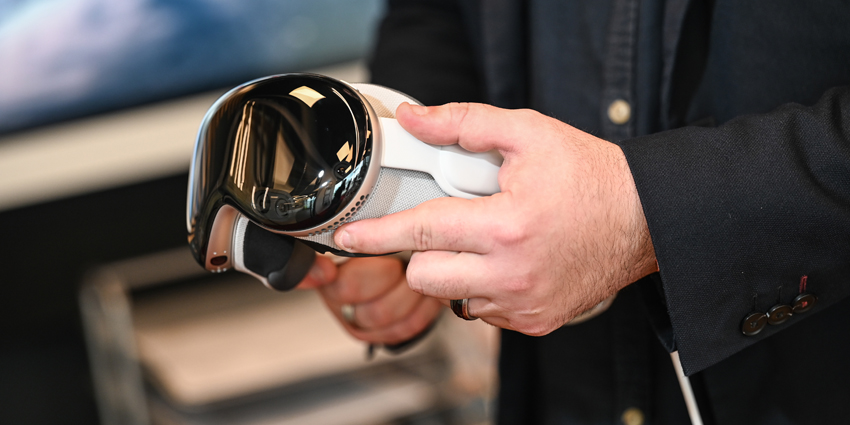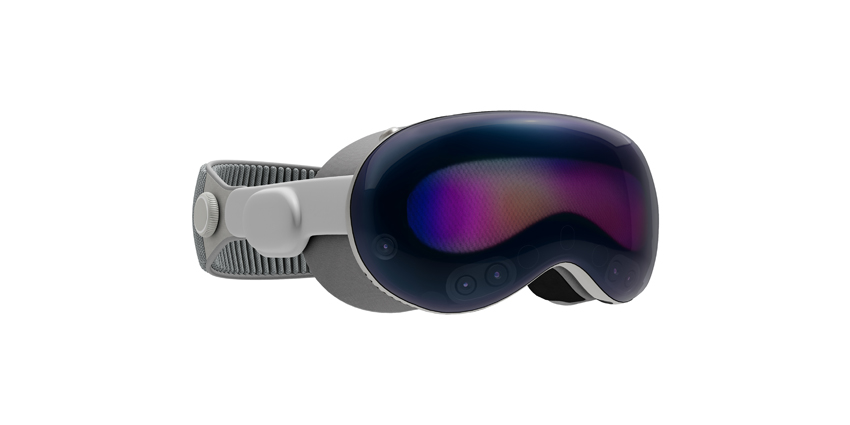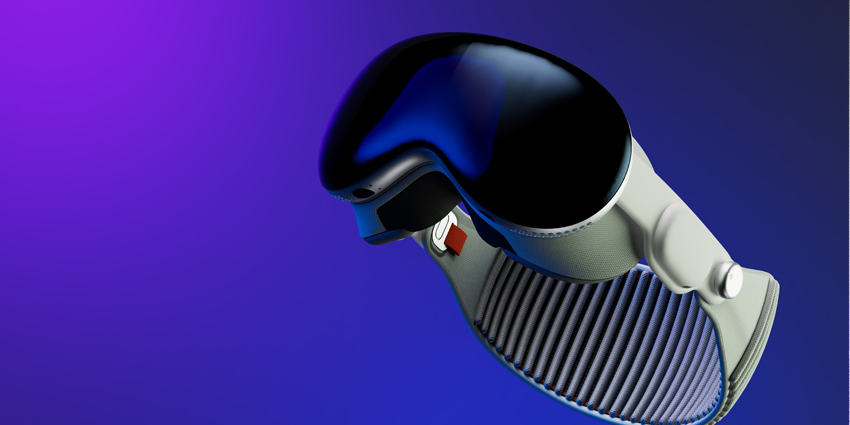Augmented Reality (AR) technology is set to become one of the fastest-growing and most promising technologies among extended reality. According to reports, the AR market is set to reach $88.4 billion USD by 2026 and $99.76 billion USD by 2028. This includes compound annual growth rates (CAGR) from 46.8 percent from 2021 to 2028.
As industry verticals like healthcare, military, remote guidance, warehouse picking, automotive, and others, augmented reality has a promising future among XR devices.
XR Today spoke to David Goldman, Vice-President of Marketing, Lumus to explore the augmented reality (AR) smart glasses industry. We discussed his company’s waveguide and materials research, using AR for medicine and surgery, and the Apple Vision Pro.
Lumus is an optics company specialising in AR displays and glass products. Founded in 2000, the Ness Ziona, Israel-based firm designed products for Scorpion helmets used in fighter jets like the A-10 Warthog and F-16 Fighting Falcon. Lumus later branched out into medical and surgical imaging devices.
Lumus and the Next Wave(guide) of AR
Goldman explained that Lumus sells sub-assemblies for virtual, augmented, and mixed reality (VR/AR/MR) devices. To advance it solutions, it begun improving its waveguides from 50-degree field of view (FoV) to roughly 80-degree FoV. The company can also accommodate bespoke specifications for multiple use cases.
Through partnerships with Mainz, Germany-based glassmaker Schott and Taiwanese firm Quanta, Lumus has explored many projects for the optics industry.
https://t.co/VBBHHVQnrU
A category killing product is nice but it’s not enough. Lumus has partnered with Quanta Computer and @SCHOTT to build a supply chain with production capacity for consumer AR glasses.
We present the @Lumus manufacturing partnerships with more detail than… pic.twitter.com/uAsdreYBCX— Lumus (@LumusVision) March 30, 2023
Furthermore, the company has collaborated on OLED, microOLED, and digital light processing (DLP) technologies, using device-agnostic manufacturing to “work with any micro-display.”
Speaking on the increased efficiency, Goldman said,
“A lot of times, our customers want to buy just the waveguides from us because they’re more efficient. They’re brighter, in some cases, five to ten times brighter than competing waveguides and are much more efficient. If you can only use a diffractive waveguide for [roughly] half an hour to one hour, our can reach between four and six on our specifications”
The company has also shifted to consumer markets while selling partially to medical and military industry partners. This is due to several “false starts” with Google Glass, Microsoft HoloLens2, and Magic Leap, although the companies remain potential customers.
He said: “Our focus is on working with top-tier companies to provide them with the waveguide technologies they’re going to want a pair of natural-looking glasses.”
Medical AR and Improving Patient Outcomes
When asked about using smart glasses to improve patient outcomes, Goldman stated that Lumus worked with the first AR medical device approved by the Food and Drug Administration (FDA).
Named X-Vision, Augmetics produced the device in Israel, which the FDA approved in 2019. According to figures from trials at Johns Hopkins, the devices reduced surgery times from six to three hours, or 50 percent.
Goldman explained that, to date, medical professionals have performed over 4,000 surgeries and “hundreds, if not over 1,000” in the US, leveraged the system. This has allowed them to raise $82.5 million in capital “because they have so much traction in the market,” he added.
He explained the need for high-quality optics in the medical industry, stating,
“You need a very bright device, because the lighting in an operating room is intentionally very bright. So using something like the HoloLens, which has a shade over it, or anything that prevents transmissivity of the real world is a problem when you’re in the operating room”
Moving attention from the patient to the screen often broke concentration for surgeons, leading to increasing demand for XR devices.
Goldman added,
“The idea was to consolidate all the vital information for the patient as they were performing the surgery […] The equipment is much less expensive than what’s normally in the operating room. The outcomes have been very positive [and] there hasn’t been one negative story, from my understanding”
On the other hand, MR goggles and AR smart glasses could also operate similarly to CAT scans by superimposing images on the patient at 1:1 scale. This has provided greater levels of precision compared to older surgical navigational techniques for spine surgeries and similar procedures, Goldman explained.
He added: “There’s something about having that scan right over the patient that really makes them more accurate as well.”
Lumus-MediThinkQ Partnership
Explaining further, Goldman noted Lumus’ partnership with MediThinQ, a South Korean medical technology firm. MediThinkQ developed the Eyes Up Surgical Display, eliminating pressures on the body for surgeons performing long surgeries.
The Seongnam, South Korean firm’s solution implements Lumus’ AR displays due to their long battery lives, high-definition imaging, and market transparency.
In a statement, Jin Lee, Senior Vice President, MediThinQ said,
“We knew they would be the best partner because of their advanced technology experience in other medical applications, and the possibility that future technological development would bring. Now, Lumus’ AR displays are a key component of our product”
It also provides monitoring images directly in front of the surgeons’ FoV, removing the need to switch between patients and monitors. It also frees up mobility for medical professionals with wireless AR technologies.
Additional XR Partnerships
As an end user for XR solutions from Tobii, Luxexcel, Essilor, and DeepOptics, Goldman outlined how these companies empowered Lumus to innovate its solutions.
Lumus aimed to solve issues with convergence accommodations conflict, often occurring while viewing stereoscopic images. This can cause headaches for viewers aged 40 and up and those with difficulty focusing.
With DeepOptics, Lumus integrated eye-tracking with transparent, liquid crystal displays that “rotate the molecules in real-time.”
Goldman explained the cutting-edge technology,
“We could actually see where the eye was looking, and if you were looking a couple of metres out, the transparent liquid crystal display would rotate those molecules you’d actually see at that distance. We’ve actually got eye sensors around the inside of the frame that track the. These are just basic IR cameras or sensors that are tracking the light in the eye, and can actually see where the iris is looking. Using the crystal, we’re able to adjust the image and the focal point for the user”
Deep Optics, a Tikva, Israel-based enterprise, partnered with Lumus to “show proof of concept (PoC).” At a recent Consumer Electronics Show (CES), Lumus also teamed up with Swedish eye-tracking company Tobii.
The independent tech firm offers one of the world’s top eye-tracking solutions for navigation and foveated view technologies for XR devices.
The two companies created a further PoC for foveated rendering, allowing XR devices to conserve power by sharpening pixels the eye actually views.
Luxexcel, a Belgian firm creating bespoke lenses for AR devices, also allowed users to create 3D prints of prescription lenses to resolve air gap issues with devices.
Thoughts on the Apple Vision Pro
When asked about the augmented reality capabilities of the Apple Vision Pro, Goldman predicted that the mixed reality (MR) headset would likely sell “just a few 100,000 units.”
Despite this, it offered “fantastic” first impressions and had “nailed” the user interface (UI), according to journalists at a Bay Area event. Features such as eye tracking, gesture recognition, downward-facing cameras, and others had “nailed” the user experience (UX).
He added that users could control icons with their gaze, which had “effectively replaced the mouse.”
“Apple’s notoriously good at this, and I was intrigued with their ability to transition in and out from full immersion seamlessly,” he stated. Goldman also lauded Apple’s software developer kit (SDK) to create an ecosystem of use cases before the product launch.
He estimates that smart glasses could increase their FoV in the next ten years to “converge into one device.”
Explaining, Goldman said,
“We’ll eventually have a converged device. I think Apple did a really good thing for the market and their own ecosystem. By coming out with a product allowing developers to build apps, they can have that magical App Store moment. In the past, the iPhone launched in 2007 and the App Store followed in 2008. The trajectory of adoption doesn’t hit until the App Store proliferates all these different cases for the end user”
Apple’s technological leap was greater than moving from buttons to touchscreens. Rather, it provided consumers with 3D menus controllable with gestures, voice recognition, eye tracking, and other biometric inputs.
Lumus and the Industrial Metaverse
When asked about his thoughts on the industrial metaverse and how Lumus’ waveguide technologies could contribute to and improve metrics for related solutions, Goldman stated that his offerings removed “one of the biggest challenges that we have, which is providing customers smart glasses that look like normal glasses.”
Conversely, industries with heavy machinery required more rugged designs or visor-attached optics, he stated.
Regarding digital twins, Goldman noted that “AR hasn’t even been tapped yet” for them.
He also explained how a rise in remote support use cases allowed people to work as some “don’t want to retire when they’re 65.”
Such workers held an “incredible knowledge base built over 30-40 years in a certain industry,” Goldman said. Conversely, younger workers could rely on these specialists in field and remote work.
He said: “For industrial platforms that can use them where it’s common enough buy sets for the entire team — That’s game-changing for reaping the benefits.”
The solutions have boosted productivity, eliminated unnecessary travel costs, and slashed equipment downtimes.
He continued,
“A company I consulted in the past used large-scale printers for billboards. Replacing parts required a person from Italy to hop on a plane and fly on-site to help with the repairs. Those days are totally gone and will never come back. You can use VR and AR with products called Vision, an optical engine for visors used by Lenovo on their first enterprise AR product, the ThinkReality A6“
Furthermore, large-scale industrial fulfilment centres such as Amazon and others could “reduce by 50 percent the amount of time needed to reach products.” Such technologies could also cut an additional 10 to 20 percent to prepare items for distribution, leading to “billions of dollars in savings.”
Concluding, Goldman explained how this could encourage companies to adopt industrial metaverse use cases due to greater returns on investment (ROI) from the technologies.







